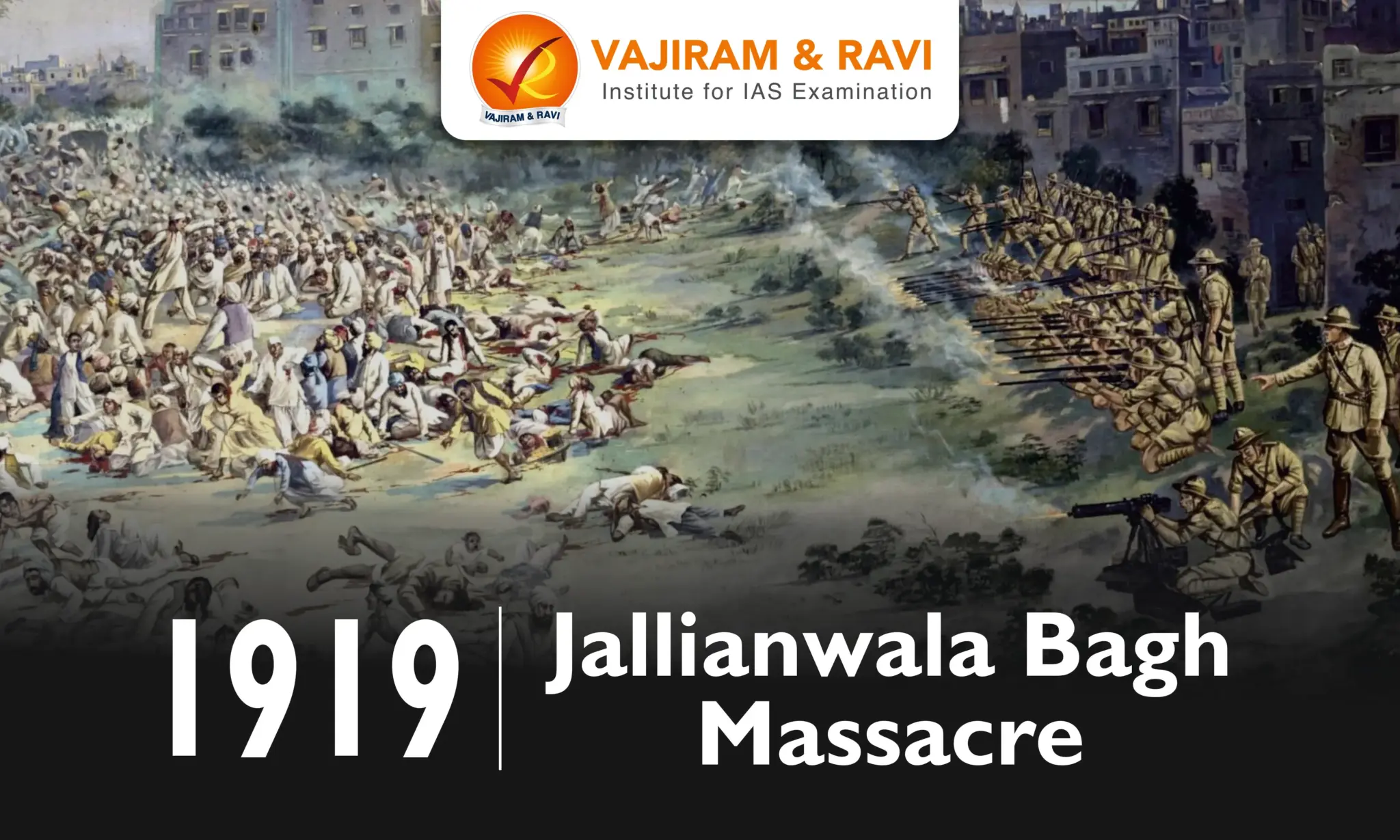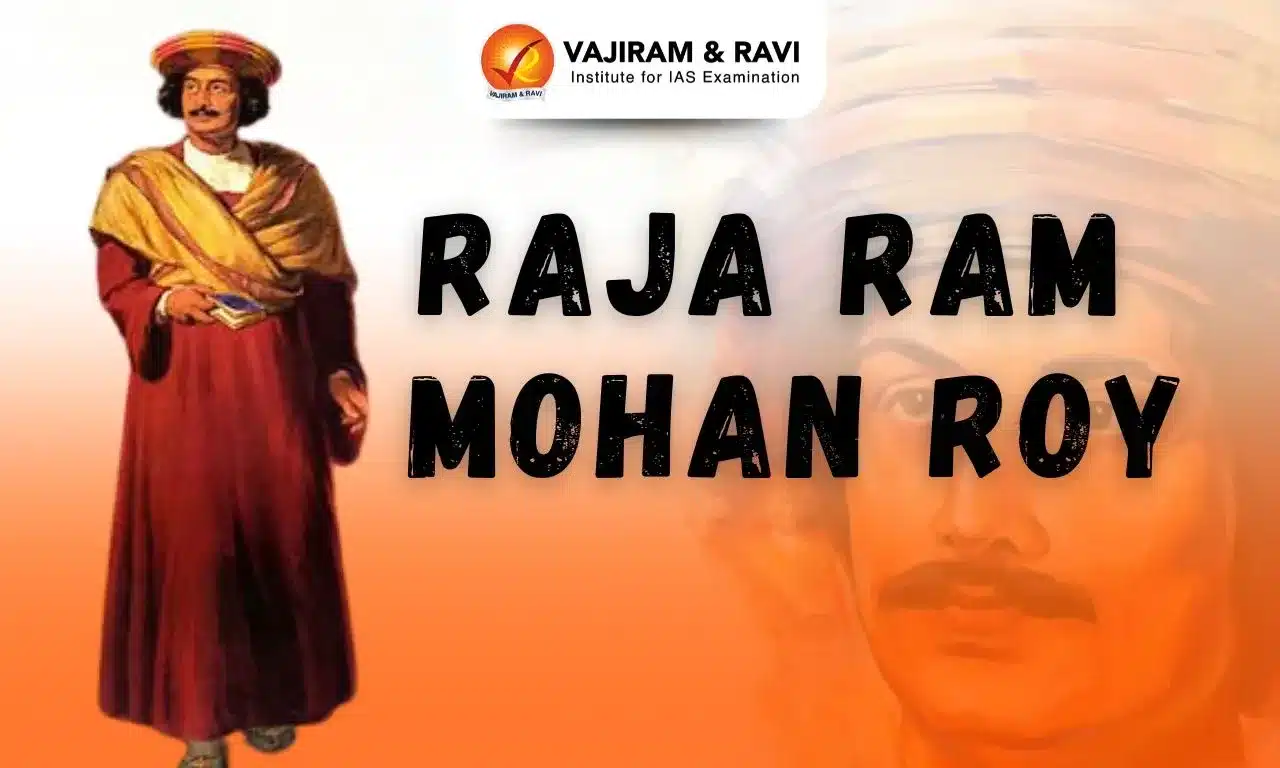The Jallianwala Bagh Massacre of 1919 stands as one of the most tragic and pivotal events in the history of British India. This brutal act of violence by British forces against Indian civilians marked a significant turning point in the Indian independence movement.
In 1951, the Government of India established a memorial at Jallianwala Bagh to honour the spirit of Indian revolutionaries and those who died in the brutal massacre.
What was the Jallianwala Bagh Massacre?
The Jallianwala Bagh Massacre, also known as the Amritsar Massacre, took place on April 13, 1919, in Amritsar, Punjab. On this fateful day, British troops led by Colonel Reginald Dyer opened fire on a large crowd of unarmed Indian civilians gathered at Jallianwala Bagh, an enclosed public garden. The crowd had gathered to peacefully protest the arrest of two nationalist leaders and the imposition of the repressive Rowlatt Act.
Background of Jallianwala Bagh Massacre 1919
The Jallianwala Bagh Massacre took place against a backdrop of growing nationalist sentiment and anti-British feelings in India. The British government introduced the controversial Rowlatt Act in March 1919, which gave them sweeping powers to arrest and detain individuals suspected of sedition without trial. This act was met with widespread opposition and protests across India.
- The city of Amritsar, a significant centre of political and religious activities, became a focal point of dissent.
- Public gatherings were a common form of protest against oppressive policies.
- On April 13, 1919, the festival of Baisakhi attracted a large crowd to Jallianwala Bagh, where people gathered to celebrate and protest.
The Jallianwala Bagh Massacre
On April 13, 1919, people gathered to celebrate Baisakhi. However, the British point of view, as evidenced by documents in the National Archives of India, suggests that it was a political gathering.
- Reasons for the gathering: Despite General Dyer’s orders prohibiting unlawful assembly, people gathered at Jallianwala Bagh to discuss two resolutions:
- One condemned the April 10 firing, and the other requested that the authorities release their leaders.
- When General Dyer received the news, he led his troops to Bagh. He entered the Bagh, deployed his troops, and ordered them to open fire without warning.
- People rushed for the exits, but Dyer ordered his soldiers to fire at them. The firing lasted for 10-15 minutes.
- The garden was enclosed on all sides by buildings and had only one narrow entrance, which was blocked by the troops, leaving the people with no escape route.
- A total of 1650 rounds were fired. The firing ceased only when the ammunition ran out. General Dyer and Mr Irving estimated a total of 291 deaths.
- However, other reports, including those of a committee led by Madan Mohan Malviya, put the death toll at more than 500.
Causes of Jallianwala Bagh Massacre
The Jallianwala Bagh Massacre in April 1919 was not an isolated incident but rather the result of a complex set of circumstances. The main causes of the Jallianwala Bagh Massacre include the following:
- Impact of First World War: During World War I (1914–18), the British government in India implemented strict emergency measures to address dissent. As the war concluded, many Indians hoped for a relaxation of these policies and greater political autonomy.
- The Montagu-Chelmsford Report of 1918 also did little to promote self-government, which was announced in the August 1917 declaration.
- Rowlatt Act of 1919: The Rowlatt Act of 1919 was introduced by the British government to curb revolutionary activities. It allowed the British authorities to arrest and detain individuals without trial, which led to widespread resentment among the Indian population.
- Arrest and Tensions in Amritsar: In Amritsar, tensions escalated after the arrest of nationalist leaders Dr Saifuddin Kitchlew and Dr Satya Pal, triggering protests and unrest. Martial law was imposed as the city, a hub of political and religious activity, became a centre of dissent.
- Martial Law: General Dyer was responsible for imposing martial law and restoring order. He proclaimed on April 13, forbidding people from leaving the city without a pass and from organising demonstrations in groups of more than three.
Jallianwala Bagh Massacre Responses
The Jallianwala Bagh massacre was widely condemned both in India and abroad. There was a strong wave of protests against the British government due to the Rowlatt Act and the Jallianwala Bagh massacre in Amritsar. In response, the government attempted to suppress these agitations with oppressive measures and issued Martial Law Ordinances in several provinces.
INC’s response to Jallianwala Bagh Massacre
The Indian National Congress (INC) strongly condemned the massacre. Mahatma Gandhi, who had been a supporter of the British Empire, was deeply shocked and returned the Kaiser-i-Hind medal awarded to him for his service during the Boer War. The INC set up its non-official committee to inquire about the massacre, including Motilal Nehru, C.R. Das, Abbas Tyabji, M.R. Jaykar and Gandhi.
British Response to Jallianwala Bagh Massacre
The British government initially tried to suppress information about the massacre. However, as news spread, there was widespread condemnation both in India and Britain.
- Many British leaders, including Winston Churchill and former Prime Minister H.H Asquith, criticised the massacre in the British Parliament.
- Michael O’Dwyer, the Lieutenant Governor of Punjab, expressed strong support for Dyer’s actions. He suspected that a revolt against the British Raj was brewing in Punjab. He also approved of the massacre and contributed significantly to its planning.
- The Hunter Commission under Lord Hunter was established on October 14, 1919, to investigate the incident. While it criticised Dyer’s actions, many Indians felt the commission’s conclusions were too lenient.
- The Hunter Committee did not impose any penal or disciplinary action.
Other prominent responses to Jallianwala Bagh Massacre
The massacre also drew condemnation from various quarters, including international figures and governments. The atrocity was widely covered in the international press, and human rights organisations expressed outrage.
- Rabindranath Tagore was deeply disturbed by the incident, and in an act of protest against the British, he renounced all titles bestowed upon him, including knighthood.
- The clergy of the Golden Temple, led by Arur Singh, honoured General Dyer by declaring him a Sikh. This act angered many and strengthened calls for reforms in the management of Sikh shrines, a demand already being made by groups like the Khalsa Diwan Majha. This eventually led to the start of the Gurudwara Reform Movement.
Jallianwala Bagh Massacre Impact
The Jallianwala Bagh Massacre profoundly impacted India’s independence struggle, exposing British oppression, highlighting the failure of justice, and fueling nationalist sentiments that intensified the fight against colonial rule.
- Exposed British Bigotry: The Jallianwala Bagh Massacre highlighted the racist and oppressive nature of British rule. It also exposed the deep-seated disregard the colonial government had for Indian lives.
- The massacre shocked many, especially moderates, who had believed in the fairness of British rule but were disillusioned when the culprits faced minimal consequences.
- Failure of Justice: The Hunter Commission, established to investigate the incident, failed to deliver justice. General Dyer faced no severe punishment—he was merely relieved of duty and barred from further employment in India, but no trial followed.
- Fuelled Nationalist Sentiments: The massacre significantly intensified the Indian independence movement. It exposed the brutal reality of British rule and led to increased support for anti-colonial activities. It fueled the rise of young freedom fighters determined to end British rule.
The Jallianwala Bagh Massacre is remembered as one of the darkest episodes in the Indian Independence Movement. It marked a turning point in the Indian freedom struggle and is remembered as a stark reminder of the need for justice and human rights. The memory of this tragic event serves as a lasting lesson to future generations on standing up against oppression and injustice.
Jallianwala Bagh Massacre UPSC PYQs
Question 1: During the Indian Freedom Struggle, why did Rowlatt Act arouse popular indignation? (UPSC Prelims 2009)
(a) It curtailed the freedom of religion
(b) It suppressed the Indian traditional education
(c) It authorized the government to imprison people without trial
(d) It curbed the trade union activities
Ans: (c)
Last updated on June, 2025
→ UPSC Notification 2025 was released on 22nd January 2025.
→ UPSC Prelims Result 2025 will be out soon for the CSE held on 25 May 2025.
→ UPSC Prelims Question Paper 2025 and Unofficial Prelims Answer Key 2025 are available now.
→ UPSC Calendar 2026 is released on 15th May, 2025.
→ The UPSC Vacancy 2025 were released 1129, out of which 979 were for UPSC CSE and remaining 150 are for UPSC IFoS.
→ UPSC Mains 2025 will be conducted on 22nd August 2025.
→ UPSC Prelims 2026 will be conducted on 24th May, 2026 & UPSC Mains 2026 will be conducted on 21st August 2026.
→ The UPSC Selection Process is of 3 stages-Prelims, Mains and Interview.
→ UPSC Result 2024 is released with latest UPSC Marksheet 2024. Check Now!
→ UPSC Toppers List 2024 is released now. Shakti Dubey is UPSC AIR 1 2024 Topper.
→ Also check Best IAS Coaching in Delhi
Jallianwala Bagh Massacre FAQs
Q1. What happened in Jallianwala Bagh massacre?+
Q2. How many died at Jallianwala Bagh massacre?+
Q3. Who ordered the Jallianwala Bagh massacre?+
Q4. Was General Dyer punished?+
Q5. How did General Dyer die?+




















